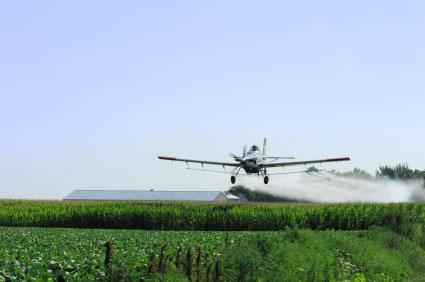 iStockphoto
iStockphoto
It’s a happy day when the New York Times treads some of Grist’s well-worn paths. This time, it’s about how overuse of Monsanto’s Roundup herbicide has given rise to “superweeds” and an exhausting chemical treadmill:
Just as the heavy use of antibiotics contributed to the rise of drug-resistant supergerms, American farmers’ near-ubiquitous use of the weedkiller Roundup has led to the rapid growth of tenacious new superweeds.
To fight them, Mr. Anderson and farmers throughout the East, Midwest and South are being forced to spray fields with more toxic herbicides, pull weeds by hand and return to more labor-intensive methods like regular plowing.
“We’re back to where we were 20 years ago,” said Mr. Anderson, who will plow about one-third of his 3,000 acres of soybean fields this spring, more than he has in years. “We’re trying to find out what works.”
Farm experts say that such efforts could lead to higher food prices, lower crop yields, rising farm costs and more pollution of land and water.
“It is the single largest threat to production agriculture that we have ever seen,” said Andrew Wargo III, the president of the Arkansas Association of Conservation Districts.
Grist coverage on the issue of superweeds can be found here, here, here, here and here. Strangely, given that the New York Times Magazine recently did a story about a pair of commodity rice growers who switched over to organic methods for some of these very reasons, the current Times piece omits discussion of any organic or agro-ecological alternatives to chemically intensive agriculture.
For example, the Rodale Institute has for years been growing commodity crops in an organic, no-till style with the same or better yields as conventional and genetically engineered seed. Much of the problem relates to a lack of information on the benefits or techniques required to convert. The “conventional wisdom” among growers is that it’s too costly, in terms of labor and reduced yields, to convert to organic. Kurt and Karen Unkel, the farmers featured in the Times Magazine piece, used a sophisticated custom-built software application to arrive at the financial benefits to conversion.
Rodale itself supplies a conversion calculator right on its website. The costs of new, patented seeds from Monsanto, plus a whole host of new chemicals, plus the additional fuel costs from the need to abandon chemical no-till farming are high — the future of seeds genetically engineered to withstand six different pesticides is a particularly bleak one for eaters as well as farmers. Indeed, the competitive advantage for conventional ag may no longer exist, if it ever did.
We’d love to hear the thoughts of recent organic converts as well as conventional farmers facing these issues — comments welcome!


